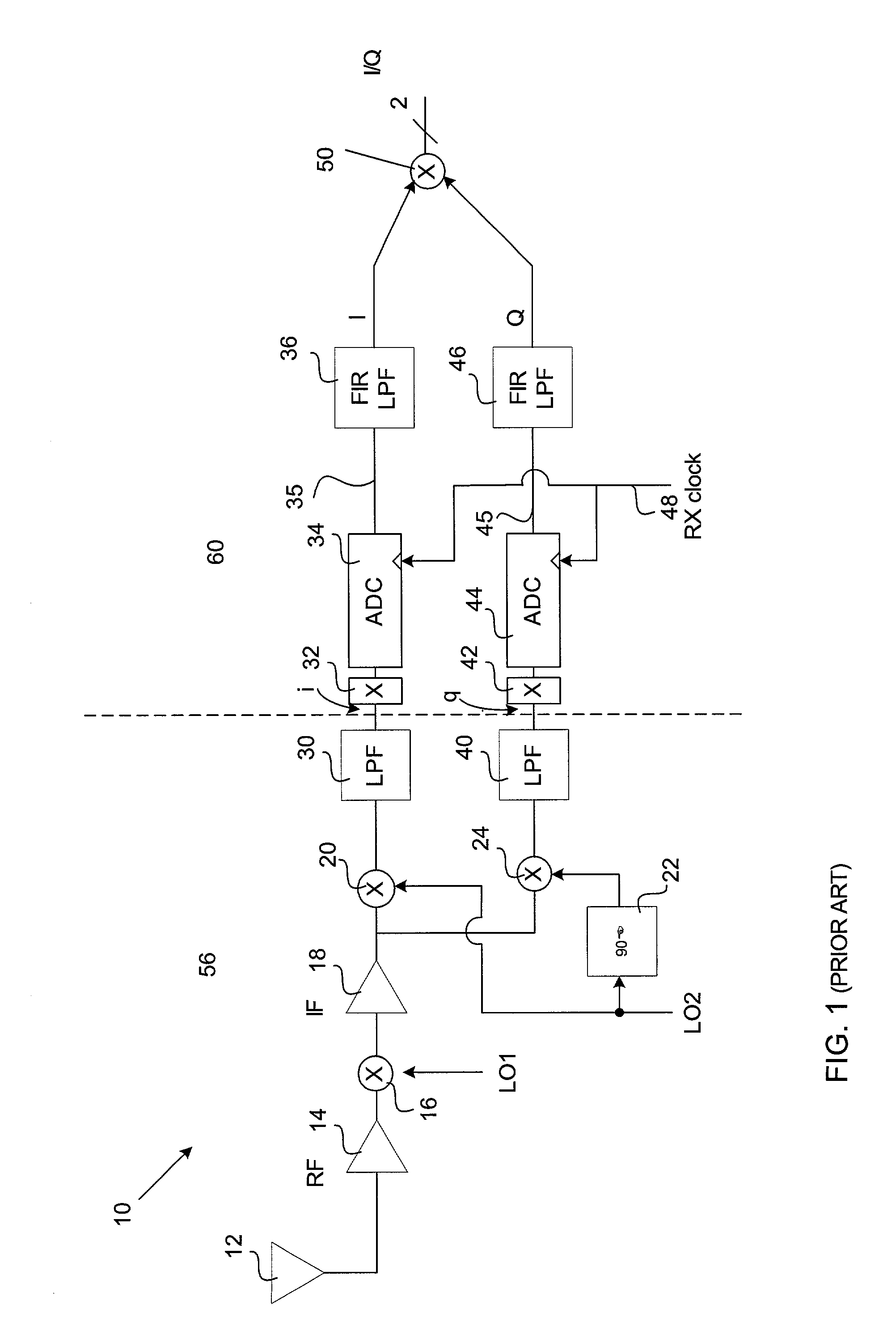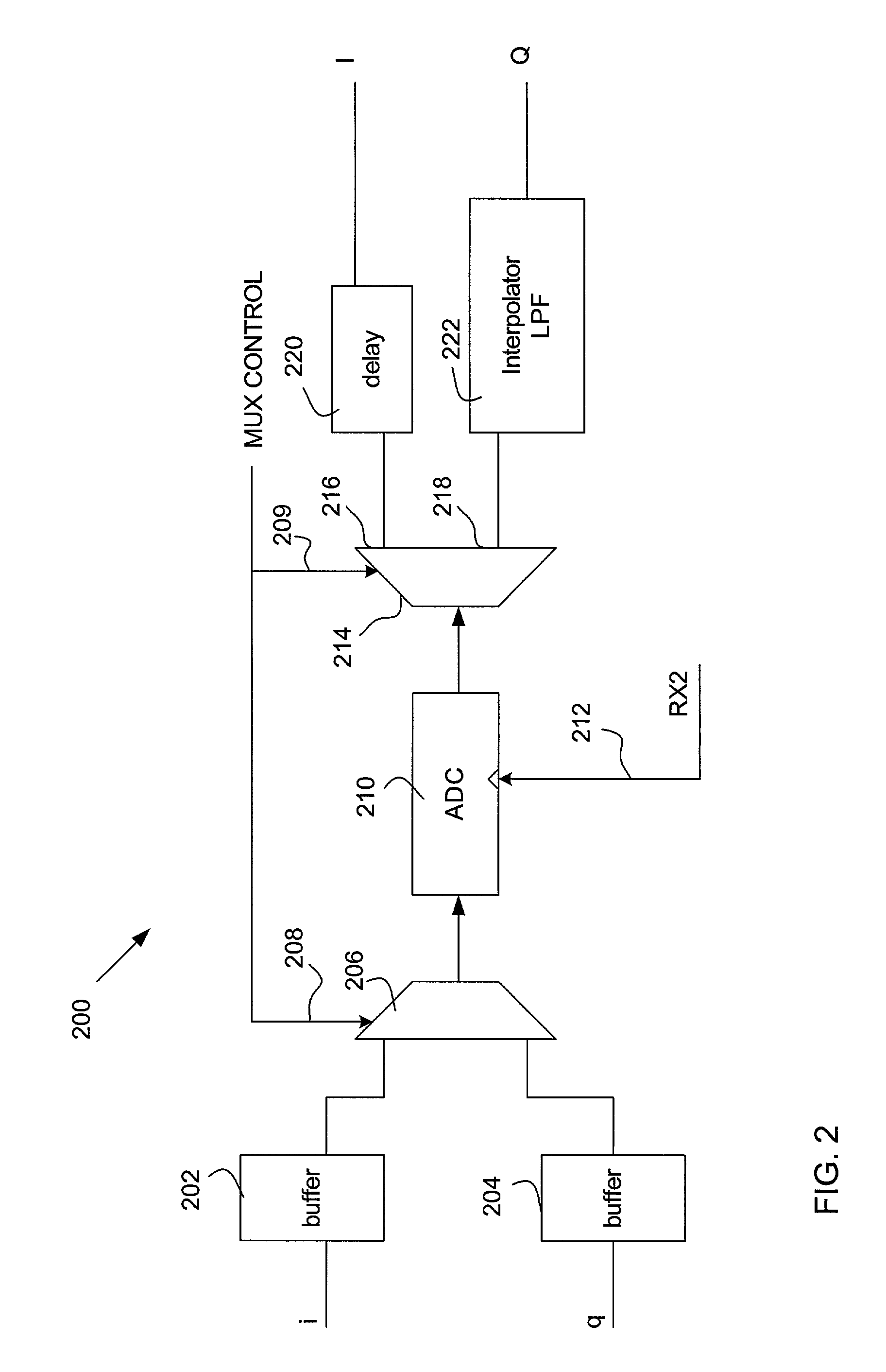ADC architecture for wireless applications
a wireless application and adc architecture technology, applied in the field of wireless communication, can solve the problems of high-performance adc circuits, high-power consumption adc circuits, and the pair of adc circuits, and achieve the effects of reducing circuit size and power, reducing circuit area and power consumption, and reducing the number
- Summary
- Abstract
- Description
- Claims
- Application Information
AI Technical Summary
Benefits of technology
Problems solved by technology
Method used
Image
Examples
Embodiment Construction
[0023]The present invention is directed to improvements in receiver circuits generally of the type illustrated in FIG. 1. It is not limited to 2-D modulation, however, but could be used in any multi-dimensional modulation RF communications application. For simplicity, we describe below particular embodiments of the invention, directed to a 2-D (I,Q) modulation application.
[0024]As described above with reference to FIG. 1, a typical RF or wireless communications receiver includes RF input, filtering, down-mixing etc. all generally designed to recover the I and Q analog signals. We will refer to such circuitry as the RF portion of the receiver, although it includes IF operations as well. Using this working definition, the RF portion provides the baseband analog signals i, q at its output. The RF portion 56 of the receiver of FIG. 1 is the circuitry generally to the left of the dashed line.
[0025]The circuitry60 on the right side of FIG. 1, including in particular the pair of ADCs, proc...
PUM
 Login to View More
Login to View More Abstract
Description
Claims
Application Information
 Login to View More
Login to View More - R&D
- Intellectual Property
- Life Sciences
- Materials
- Tech Scout
- Unparalleled Data Quality
- Higher Quality Content
- 60% Fewer Hallucinations
Browse by: Latest US Patents, China's latest patents, Technical Efficacy Thesaurus, Application Domain, Technology Topic, Popular Technical Reports.
© 2025 PatSnap. All rights reserved.Legal|Privacy policy|Modern Slavery Act Transparency Statement|Sitemap|About US| Contact US: help@patsnap.com



